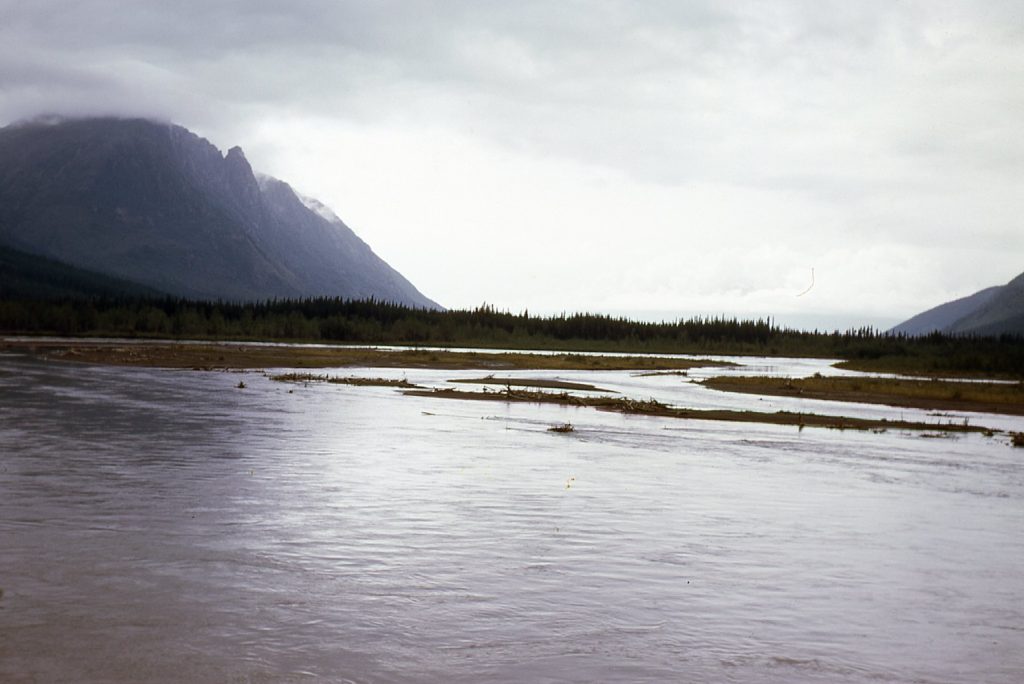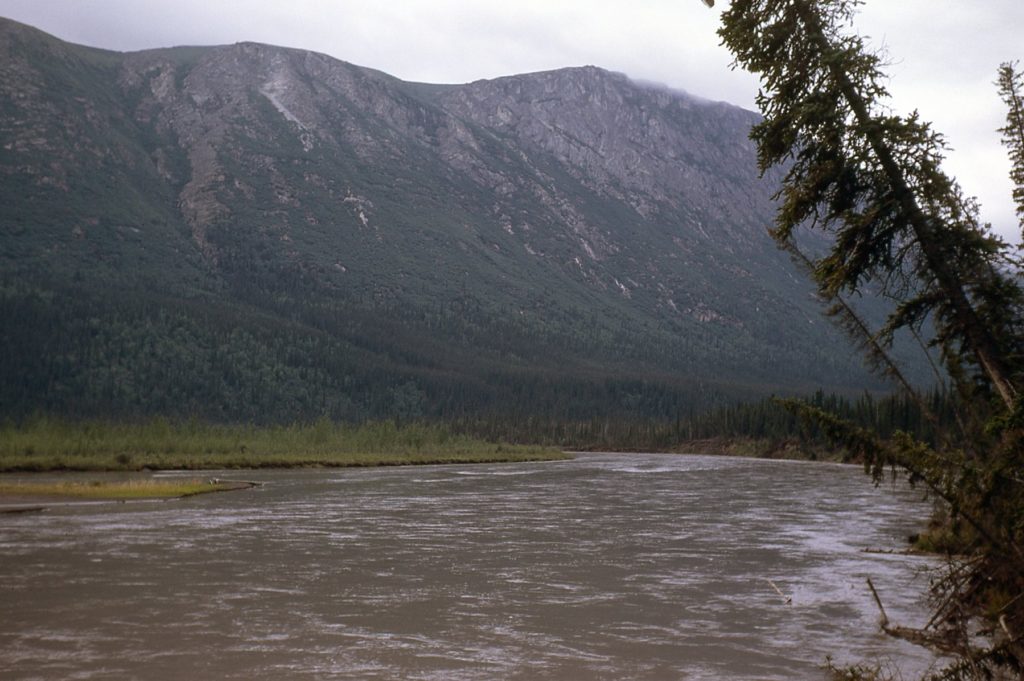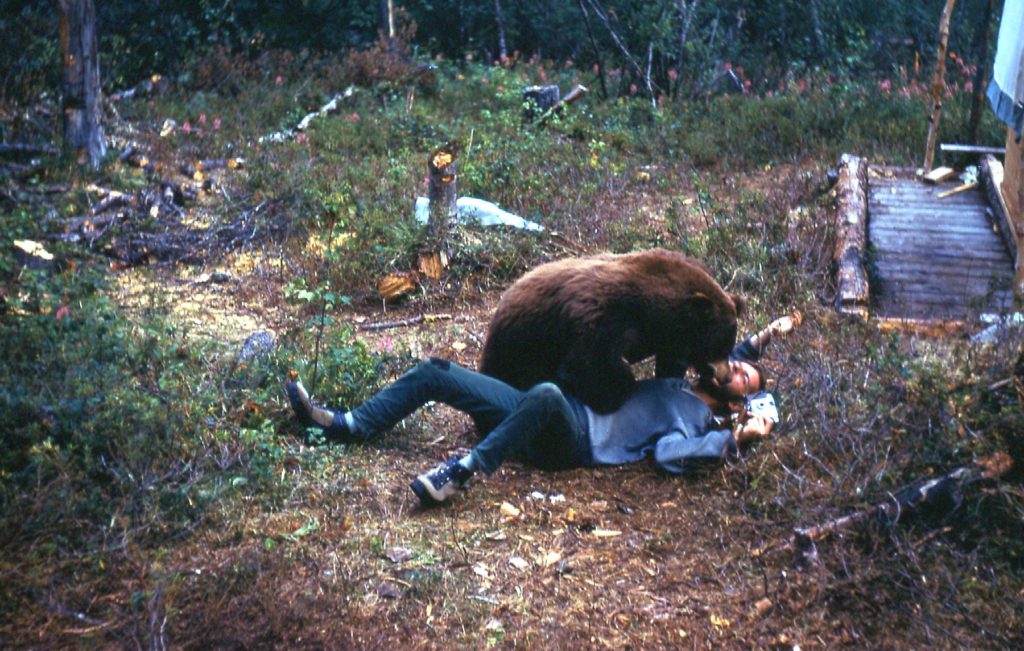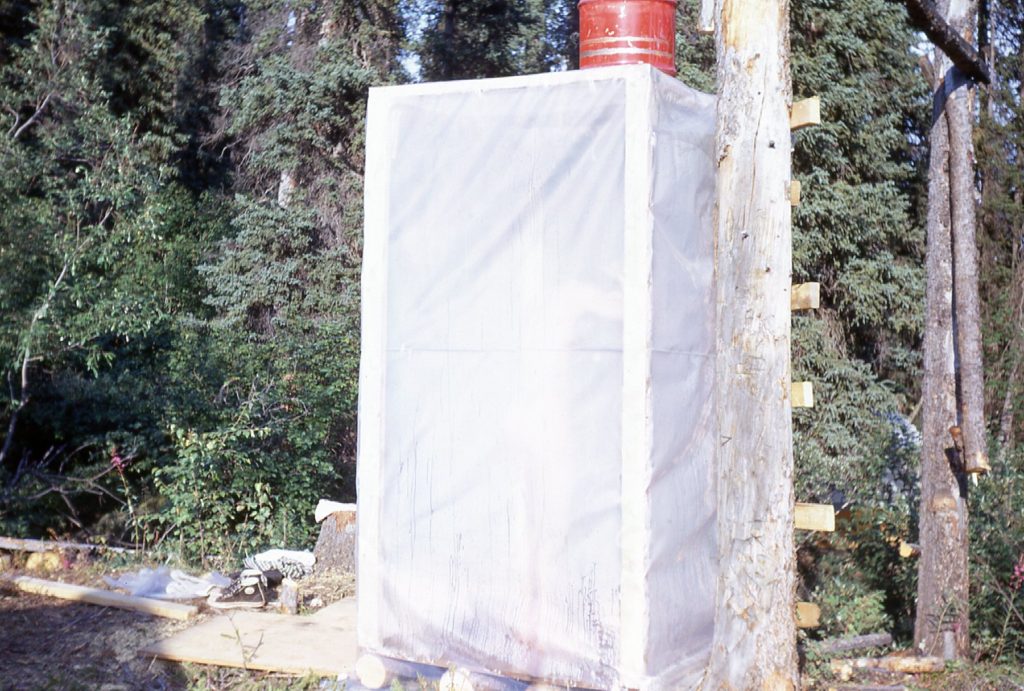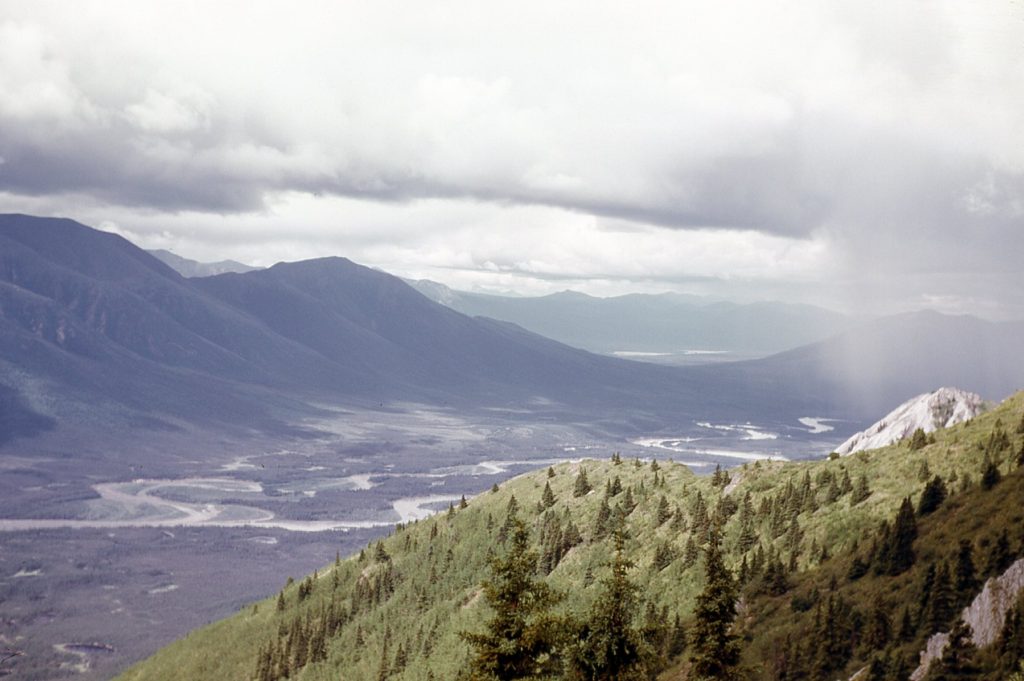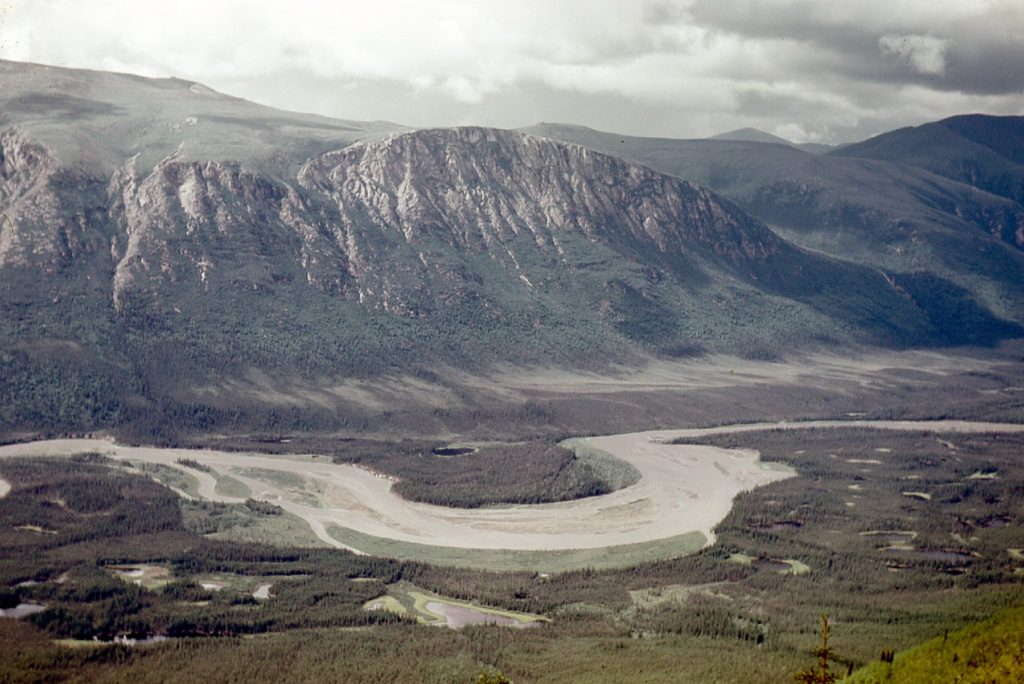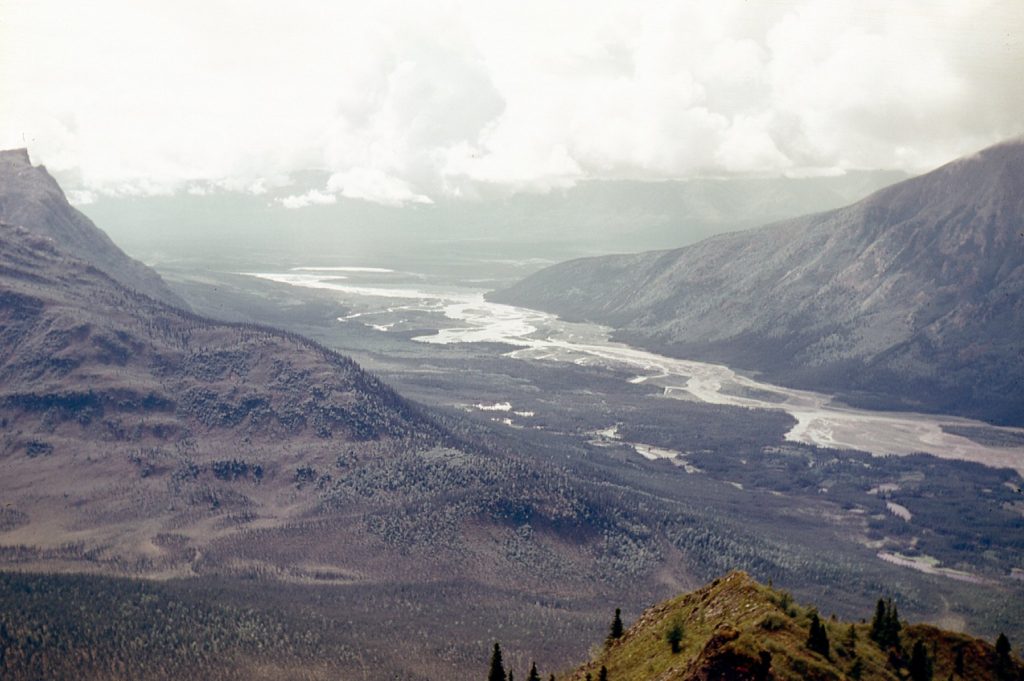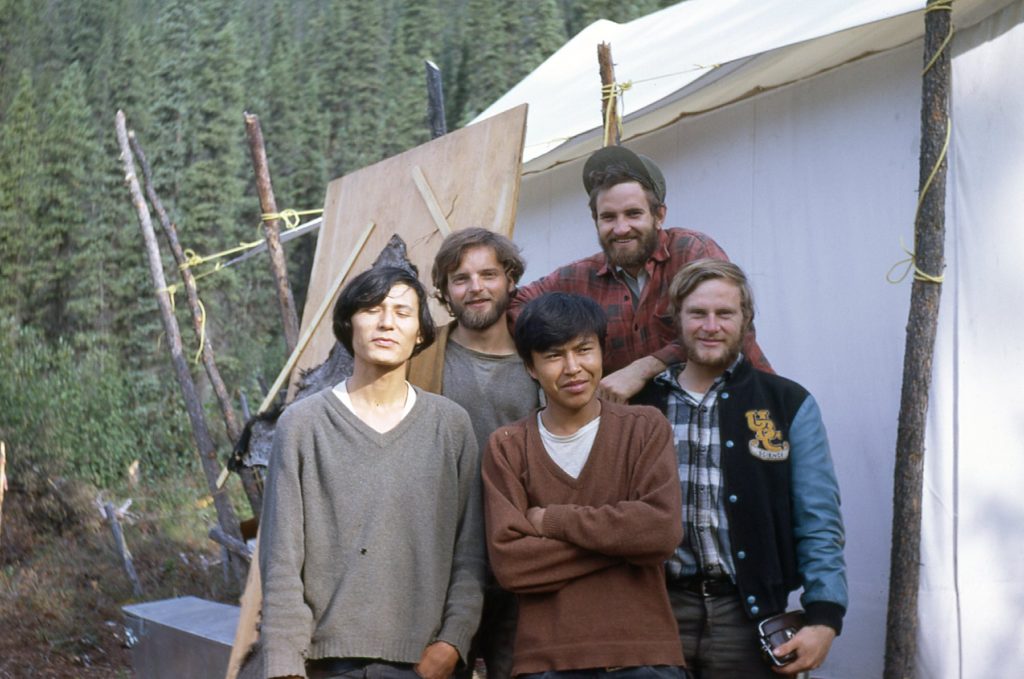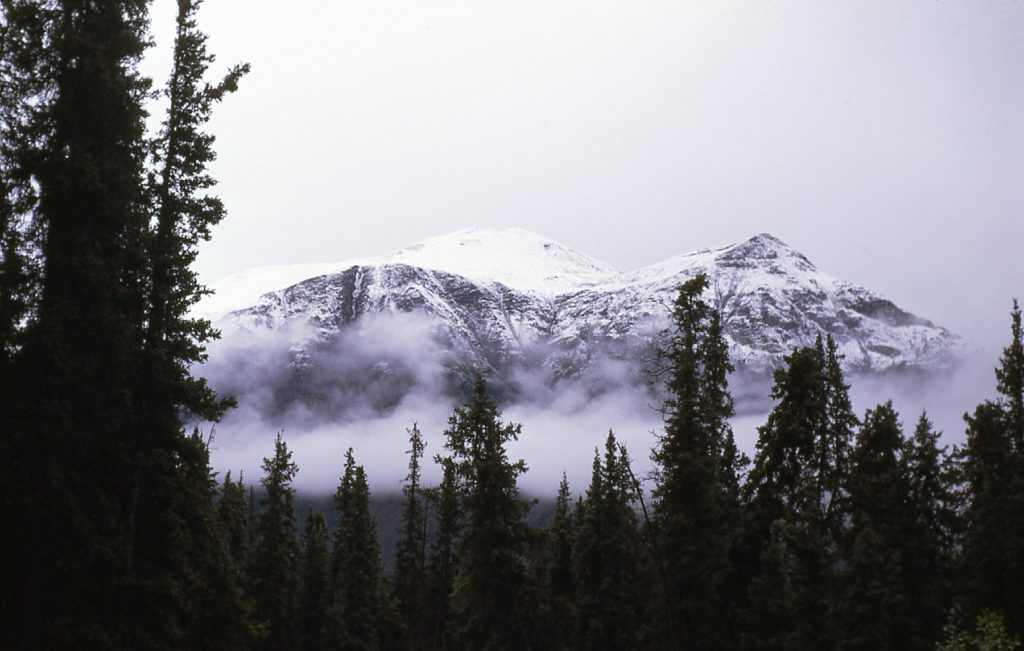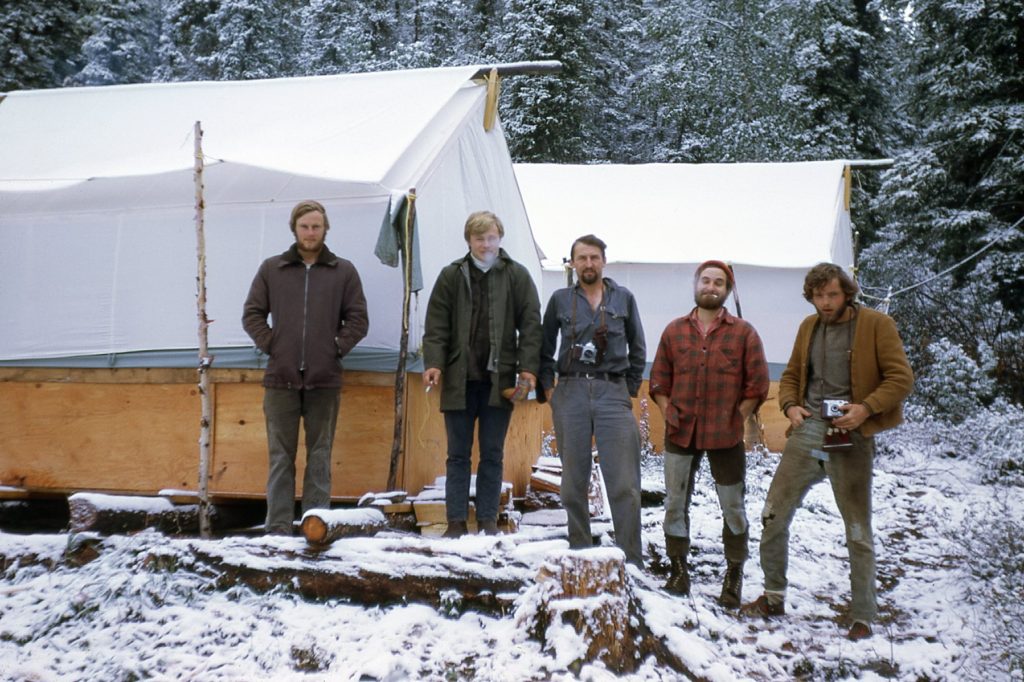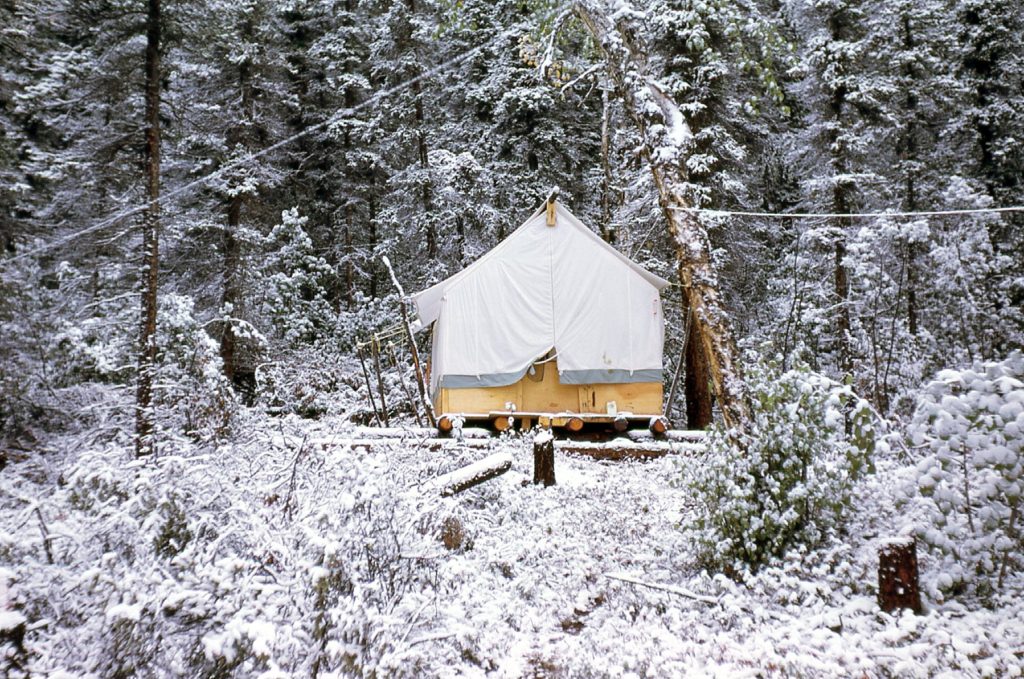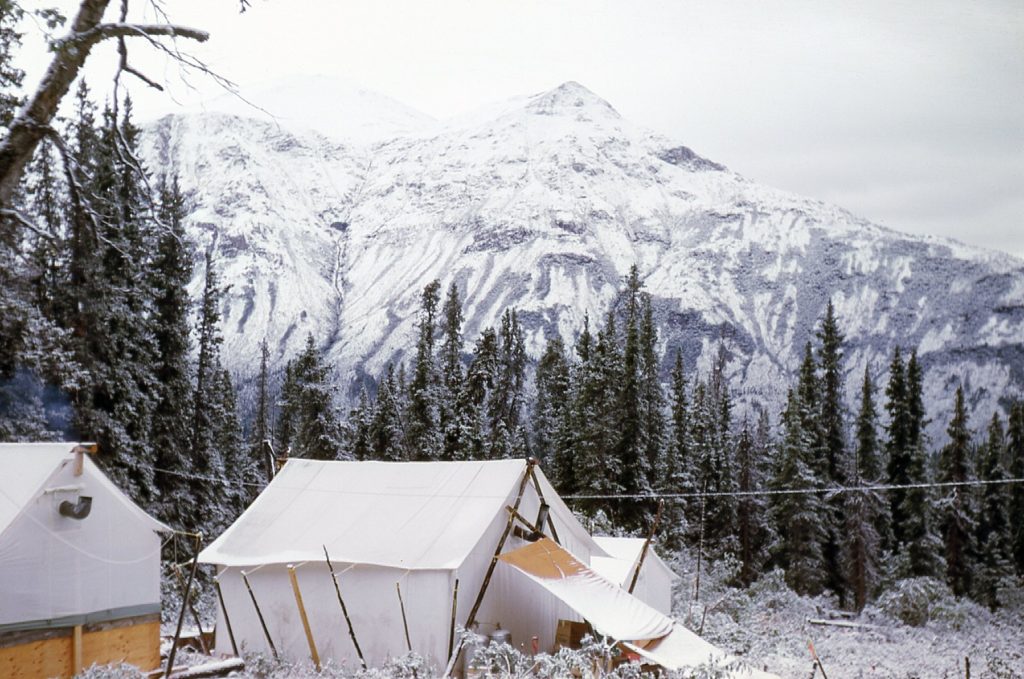Please be sure to read the two previous chapters of the story before proceeding with this one.
The nights were still chilly in early July, often dipping to below freezing, but the days warmed up nicely. We were all able to get out and get our work done. The guys were cutting lines for the mapping and the other work we’d need to do, and that was a huge job and hard work. For my part, I’d head out on to the mining property each day and continue with my mapping. When we started at Cam, there were a total of 40 mining claims already staked. We had an option on the original group of 24 owned by others. Our boss, Bud Lazenby, had flown in there in February and he and the chopper pilot staked another 16 (brrr!). Once we arrived in June, I realized we needed to cover all our bases so I had the guys stake another 8 claims at the edge of the property – this gave us a total of 48 full-size mining claims for the Cam property.
One thing about working this far north in the summer is the fact that there is very little darkness at night. For the sun to not set at all, you’d have to be at or north of the Arctic Circle, which is 66 degrees 33′ 48.2″ north latitude. Our camp was situated at 61 degrees 41′ 38″, which translates to the fact that we were almost 237 miles south of the Arctic Circle. Even so, it stayed light enough that even at the darkest time of night you could still sit outside and read a newspaper, which we thought was pretty cool.
On July the 6th, my curiosity got the better of me and I walked west across the property through the bush and down to the edge of the Kluane River. I was curious to see if there was any chance of getting across it. Look at these photos and see what you think.
I’d say it was a death-wish to even try to get across to the other side. The water was ice-cold from melting snow and glaciers, and who knows how deep, plus the swift current. The Kluane River drains Kluane Lake, the largest in the Yukon. It flows into the Donjek River, which flows into the White River, which finally flows into the Yukon River. The Yukon River flows north past Dawson City and through Alaska all the way to the Bering Sea near Nome. So ended my first and only visit to the river, and I realized that trying to cross it, at least in this area, was a lost cause.
Life in camp was enjoyable – we worked hard, ate well and stayed busy – nobody was bored. We even managed to have a little fun. One day, though, Mike was attacked by a bear near his tent.
Just kidding! Don had tanned the hide of a bear he had shot back at Yucca camp, and he put it over himself for this photo of him “attacking” Mike. Looks pretty real, doesn’t it?
On July 10th, the chopper arrived with mail and supplies. An envelope addressed to me contained my degree from the university. Geologists rarely ever got to attend their actual graduation – we were always working out in the middle of nowhere by the time the ceremony came around.
We had been in camp for 23 days when we reached the point where we couldn’t stand our own smell any longer – it was time to build a shower. Here it was, and it worked like a charm. Some 2x4s, plastic sheeting and a small barrel on top. We’d heat water on the wood stove and climb with it up the makeshift ladder on the tree, pour it into the red barrel and turn on the tap on the shower head (which was attached to the bottom of the barrel). Life was good.
Mike had a .22 bolt action rifle. I had brought my high-powered .270 Winchester bolt action with scope (it had been my Dad’s – I was no hunter). The .22 came in handy – one evening we had a duck for dinner that Don had shot. We noticed that our supply of chocolate bars stored in the cook tent was rapidly disappearing – we kept blaming each other for taking more than their share, until one day we discovered the real culprit. Squirrels were coming into the tent from below – they’d grab a bar in their mouth and make off with it, running with it into the surrounding bush. That was it, now we were at war with the squirrels. We ended up shooting almost 30 of the critters until the problem ended.
Where were you on July 16th, 1969? We were in camp, huddled around my Grundig transistor radio which was hooked up to a fine aerial made of some of that copper wire that Keith and I had liberated two months earlier at the other camp. We sat there spellbound as Neil Armstrong stepped on to the surface of the moon.
That really smoky period in mid-June ended when the rains came, then we had mostly rainy weather for almost a month before it finally cleared up on July 18th. We had little choice but to continue working through it all. One day I climbed to a high corner of the property on its northwest side to check out some outcrop and had these views along the river.
Here’s a horseshoe bend closer to our mining claims.
And here’s a look upstream.
Another bear had been hanging around camp and posing a nuisance. On the morning of July 19th, Don shot it with the .270 from the door of his tent, in the process scaring the crap out of everybody. He had also shot a porcupine with the .22, and that evening we ate it for dinner. I’m not sure how he prepared it – very carefully, I’ll bet – and we all thought it tasted good. Nothing went to waste in our camp.
We needed some extra help cutting lines for the surveying that would take place in August, so I arranged to hire a couple of strong, young guys from Burwash Landing, the nearest community. We flew them in on the next chopper and they set right to work along with the rest of us. Danny and Mike Johnson were great guys and hard workers. Here’s one of my favorite pictures from the summer.
That’s Danny Johnson in front on the left; beside him in the brown sweater is Mike Johnson. The other three are Keith, on the right with the UBC science jacket with blue sleeves; our cook Don is standing up high and behind him in the red checked shirt; Mike is behind the Johnsons. Keith, Don, Mike and myself comprised the core group of Cam – we were the ones who were there through thick or thin, no matter what, while others came and went.
JIm, another of the guys from the Vancouver office came in for a visit. We had asked him to bring some beer and other alcohol with him. When he arrived, all he had was a single case of beer, 12 bottles. He took me aside and said that he was concerned that because we had a couple of Indian fellows in camp, he only brought a bit of booze with him – he was afraid they’d get drunk and crazy and be no good to us as workers. I was livid – I told him he should have left his racist stereotypes back in the city, that it was my decision and responsibility and didn’t involve him. We were all really upset with him, and the cook decided on a good way to get back at him. He told the rest of us that he would prepare the worst food he could for the couple of days while Jim was there, and that we should just play along with him. We all agreed. That evening, Don served bear meat for supper. We all pretended to love it, while Jim poked at it and lost his appetite. Food-wise, the next couple of days went about the same – he was glad to leave and we were happy to see him go.
One of the main reasons Jim had visited was to check up on things, especially me, to see that the work was getting done. We had all been working hard. I had been putting in a lot of time on the mapping, and he found no reason to complain as he examined my work. He left feeling satisfied, if not a bit hungry!
On the 25th of July, it rained hard in camp. There was fresh snow on the nearby mountains, and the temperature never got above 40 degrees F. all day. The next day, it didn’t get above 33. I worked in the office all day and finished another map sheet with the wood stove going gangbusters.
Wow, this was an interesting development. Only weeks before, the Yukon had experienced an unprecedented heat wave, and now it looked like winter in July. It stayed cold, and on August 2nd the chopper flew in. The surveyors had arrived and would be with us for a while. We said goodbye to Danny and Mike and the chopper flew them back to their village.
Our surveyor, Stu, did this type of work during the summers – otherwise, he was a school teacher. His young assistant, Laurie, was a student. They would now get to work surveying the entire block of claims, and their work would provide a precise grid on which to base the geological mapping and other studies we would undertake.
The creek that ran past camp was drying up, or, more accurately, it was going underground. That would be a problem, as the cook needed a steady and reliable source of water. Some distance upstream, it was still flowing well, so we ran a water line from there down to camp – that fixed the problem.
On August 5th, my continuing exploration of the property found more intrusive (bedrock that was exposed) – it, too, had to be mapped, so that set my schedule back a bit. The next day, the temperature never climbed above 38 degrees and spent most of the time at 35. The following day was even worse – by mid-afternoon it was 29 degrees and snowing, which it did until bedtime.
Earlier in the day, an unexpected chopper dropped by with our mail, staying for just a few minutes – our boss must have learned they’d be in the vicinity and arranged a drop-off. Whenever we did get mail, the chopper didn’t stick around. You didn’t have time to write a reply to anybody, so it’d be another 10 days or so before your reply went back out with the next chopper – it seemed to take forever to resolve anything by mail. It was both frustrating and rather sad.
The next picture shows the tent Keith and I shared. It was in there that we kept the transistor radio, and in there where we listened to the moon landing.
On the 8th, the temperature hovered around freezing all day. Keith and Mike were out working in snow as deep as 14 inches while I hunkered down with my maps in the office. The 10th brought 29 degrees and six hours of snowfall. It would snow at least a little bit every day. On the 13th, it was 32 degrees and it snowed all day. This snowy weather was not in any way normal for August in this part of the Yukon, but the region did boast something special in the way of temperature.
At a place called Snag, 58 air miles northwest of our camp, there had once been one of those airstrips that was part of the Northwest Staging Route. The airstrip was abandoned in 1967. However, back in the day when it was still in use, it was manned full-time and had an official weather station. There, on February 3, 1947, the coldest temperature ever recorded in North America occurred. The mercury dropped to an amazing -81.4 degrees F, or -63 degrees C. That record has never been broken and stands to this day. Here’s a good link to the event.
On our regularly-scheduled radio calls to our boss Bud in Whitehorse, he was becoming somewhat incredulous that we were having so much bad weather. It was definitely slowing our work down. He felt he just had to see for himself, so on the 14th he flew into camp along with Bernie and Gerry who would help us out for a while.
Bud and I walked much of the property, and he reviewed my mapping up to that point – he seemed pleased, and therefore so was I. I drafted copies of some maps that he could take with him, and also a report for his bosses back in Vancouver. By now we had passed mid-August, but still had plenty of work to finish before the field season ended.
Stay tuned for the final installment of our story, to be entitled “The Yukon – Part 4”.

